The Chicago Quantum Exchange and the University of Chicago held the second annual Quantum Creators Prize Symposium on November, 15, 2022, to recognize the achievements of early-career researchers in the broad areas of quantum information science and engineering. It was held in person at the David Rubenstein Forum in Chicago as part of the 2022 Chicago Quantum Summit.

Victoria Xu, Massachusetts Institute of Technology
As of July 2025: Assistant Professor, Department of Physics, UC Berkeley
Title: Gravitational-wave astronomy beyond the quantum limit
Abstract: As one of the most sensitive displacement sensors ever built, the Advanced Laser Interferometer Gravitational-wave Observatory (Advanced LIGO) operates at the limit of quantum noise to detect gravitational waves from explosive astrophysical events, such as the mergers of black holes and neutron stars. Already, the detectors inject quantum light (“squeezed” vacuum) to reduce high-frequency quantum noise from shot noise. Major upgrades are now underway to additionally reduce the low-frequency quantum noise that results from opto-mechanical backaction. This involves coupling a more powerful squeezed light source to a 300-m long, narrow-band, in-vacuum “filter” cavity, which rotates the squeezing quadrature below 100 Hz to evade low-frequency quantum noise in the astrophysically-critical band. This low-frequency squeeze rotation will at last configure the LIGO interferometers for optimal sensing below the standard quantum limit. In the next observing run, together with our growing international LIGO-Virgo-KAGRA (LVK) network of observatories, these quantum technologies will help bring gravitational wave detection from a near-weekly to near-daily occurrence, expanding the observable horizon of gravitational-wave astronomy.

Xin Zheng, University of Wisconsin-Madison
Title: Testing fundamental physics with a multiplexed optical lattice clock
Abstract: Enabled by the unprecedented precision achieved over recent years, optical clocks now offer new opportunity to test fundamental physics. While most of the clock research have focused on improving the absolute accuracy, many searches for new physics can be performed by comparing the frequency difference between two clocks. In this regard, we have recently demonstrated a “multiplexed” optical lattice clock which allows for making two or more clocks in a single vacuum chamber. By performing synchronous differential clock comparisons, we demonstrated record atom-atom coherence times of 30 seconds and achieved clock comparison instability below one part in 1019 in less than 3.5 hours of averaging. In this talk, I will introduce the idea and working principle of our “multiplexed” clock. I will then report on our recent result of a precision laboratory test of the gravitational redshift at the sub-centimeter scale using a miniature clock network. Finally, I will discuss the outlook for future tests of fundamental physics with our apparatus and improvements such as using quantum entanglement.

Abhinav Deshpande, California Institute of Technology
Title: The complexity of simulating quantum dynamics
Abstract: Studying the limitations of quantum and classical computers is just an important a venture as studying their power. In this talk, I argue that the question of whether a physical system can be simulated on a computer is important not just from a practical perspective but also a fundamental one. We consider the complexity of simulating dynamics for various physical systems, both with classical and quantum computers. This study generally gives us complexity phase diagrams in parameter space. I will mention recent results in this topic, such as an understanding of many-body-localised systems and a complexity phase diagram for a long-range bosonic Hamiltonian. I will also talk about the physical implications of these results.

Aaron Young, University of Colorado Boulder
Title: Many-particle quantum optics with programmable atom arrays
Abstract: Large ensembles of non-interacting but identical particles can interfere in complicated ways, illuminating the core features that make quantum dynamics hard to simulate classically. While pioneering studies have explored aspects of this kind of interference using different non-classical states of light, it is challenging to make and preserve large Fock states of identical photons. Here, we use optical tweezer arrays and narrow line optical cooling to assemble large Fock states of bosonic alkaline earth atoms in an optical lattice to study many-particle interference in a regime that is currently inaccessible using photons. These tools for assembling ensembles of identical atoms and programmably modifying their evolution are broadly useful for a number of endeavors in quantum science. In particular, since alkaline earth atoms also possess well-controlled internal states with extremely high quality factors, and switchable interactions, they can be used for quantum enhanced precision measurement, and for simulations of various interacting spin and Hubbard models.

Judy (Zhurun) Ji, Stanford University
As of July 2025: Assistant Professor of Physics, MIT
Title: Opening a ‘nano’ window to the world of quantum optoelectronics
Abstract: Quantum materials – especially electronic materials that can source, detect and control light, promise to spark the next technological revolution. Recently, light-matter interactions in quantum materials have attracted enormous research interest, with a major aim towards characterizing their electronic properties by exotic optical phenomena and advancing their applications in quantum devices. However, the existing optical probes have many limitations, and new techniques need to be continuously developed to uncover and utilize the quantum beauty lurking in these materials. In this talk, we will discuss our recent efforts introducing “nonlocality” into optoelectronics, and our discoveries including the spatially dispersive circular photogalvanic effect, orbital photogalvanic effect and opto-twistronic responses. By combining perspectives and approaches across quantum kinetic theory, band theory calculations and our newly developed state-of-the-art angle resolved photocurrent spectroscopy as well as optically coupled microwave impedance microscopy, we systemically explore the unique optical signatures of topological semimetals and 2D van der waals semiconductors. We will also discuss how those discoveries would open a new venue for quantum circuits utilizing quantum materials, and their implications for the next quantum renovation.

Jens Hertkorn, University of Stuttgart
Title: Pattern formation in quantum ferrofluids: From supersolids to superglasses
Abstract: Pattern formation is a ubiquitous phenomenon observed in nonlinear and out-of-equilibrium systems. In equilibrium, ultracold dipolar quantum gases have been shown to host superfluid quantum droplet patterns, which realize a supersolid phase. By studying the phase diagram of such quantum ferrofluids in oblate trap geometries we discover a wide range of exotic states of matter. Beyond the supersolid droplet regime, we find crystalline honeycomb and amorphous labyrinthine states with strong density connections. These patterns, combining superfluidity with a spontaneously broken spatial symmetry, are candidates for a new type of supersolid and superglass, respectively. The stabilization through quantum fluctuations allows one to find these patterns for a wide variety of trap geometries, interaction strengths, and atom numbers. Our study illuminates the origin of the various possible morphologies of quantum ferrofluids, highlights their emergent supersolid and superglass properties and shows that their occurrence is generic of strongly dipolar interacting systems.

Anuva Aishwarya, University of Illinois Urbana-Champaign
Title: A nanowire tip-based scanning tunneling microscopy and spectroscopy probe using topological Kondo insulators
Abstract: The technique of scanning tunneling microscopy relies on having a metallic tip with an extremely flat density of states to probe excitations in a sample of choice. In this work, using state-of-the-art nanofabrication techniques we have harvested nanowires of samarium hexaboride, a strongly correlated electron system and a candidate topological Kondo insulator, as probe tips for tunneling microscopy. The tips are used to image the bicollinear stripe spin-order in the canonical antiferromagnet iron telluride with a Neel temperature of ~50 K. The antiferromagnetic stripes become invisible above 10 K concomitant with the suppression of the topological surface states. We further demonstrate that the direction of spin-polarization is tied to the tunneling direction, which our calculations show to be a unique feature of tunneling from spin-momentum locked surface states. Our work paves the way for a new generation of STM spectroscopy using functionalized nanowires to probe and manipulate emergent excitations in materials.

Kyle Seyler, California Institute of Technology
Title: Detecting and manipulating antiferromagnetism with light in quantum materials
Abstract: Intense laser pulses are versatile tools for discovering and controlling emergent phenomena in quantum materials. One particularly fruitful area is the field of ultrafast magnetism, where research has revealed new routes to detect and manipulate magnetism with light on ultrashort timescales. In this talk, I will introduce the undoped cuprates, the parent compounds of the high-temperature superconductors, as a new platform to explore ultrafast magnetism. I will describe how optical second-harmonic generation can couple to the antiferromagnetic order in an undoped cuprate, which enables direct visualization of its mesoscopic magnetic structure. This allows us to uncover previously unresolved features, including a peculiar spin reorientation transition that swaps the antiferromagnetic domain states while preserving the domain structure. Finally, I will discuss opportunities and progress in manipulating cuprate antiferromagnetism with light.
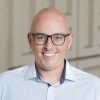
Chris Anderson, Stanford University
Title: Scalable quantum networks with silicon carbide photonics
Abstract:The promise of quantum networks to scale quantum computers, build distributed sensors, and unlock ultra-secure communication relies on the ability to create and mediate entanglement at a distance. I will describe our work towards this goal by utilizing optically-active qubits in the solid-state. In particular, I will highlight the development of silicon carbide (SiC) as an emerging platform for wafer scale, CMOS compatible, semiconductor quantum repeaters that enable a quantum internet. In this system, we isolate and control single electron spin qubits displaying the longest coherences ever reported, entangle them with nuclear spin quantum memories, and read out the states in a single shot. Leveraging the >$1 billion SiC electronics industry, we then show that semiconductor device engineering drastically improves optical coherence and stability for entanglement generation. Finally, I will review our recent advances in SiC quantum photonic devices, which enable the efficient interfacing and purification of the single photons emitted from these qubits. As a whole, these results establish SiC as an attractive platform for building and distributing large entangled states over existing fiber-optic telecommunications networks.
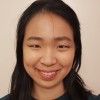
Yihui Quek, Freie Universität Berlin
Title: Learning from the Scrooge: quantum learning with noisy or rare inputs.
Abstract: The emergence of the first quantum devices will necessitate protocols for benchmarking and characterizing them. Learning theory has proven to be a valuable framework for such analysis, but the quantum near-term setting imposes unique challenges for applying its tools. We study the learnability of distributions output by local quantum circuits and comment on its implications for quantum machine learning, show how learning noisy quantum states places strong barriers on the efficacy of error mitigation and give a hint as to how quantum processes can be learned even with no control at their input.

Colin Lualdi, University of Illinois Urbana-Champaign
Title: Photonic Entanglement: Efficient Preparation and Effective Utilization
Abstract: Quantum entanglement has many applications, ranging from networking to precision metrology (to Nobel Prize generation!). However, the large-scale deployment of entanglement-based technologies requires both the efficient preparation and the effective utilization of photonic entanglement resources. As current entanglement-generation methods are inefficient, I will describe how our research group is pursuing single photons as a solution. A plentiful supply of single photons has potential to enable the efficient assembly of entangled states ranging from basic heralded two-photon Bell states to exotic multi-photon cluster states. By combining multiplexing methods with high-purity single-photon sources and technologies such as low-loss fast optical switches, efficient quantum memories, and photon-number-resolving detectors, we have made great strides in realizing a high-efficiency single-photon source necessary for the large-scale operation of entanglement-generating quantum gates. Additionally, I will discuss our work in ultrasensitive metrology as an example of the effective use of entanglement. Conventional single-photon “classical” interference and quantum two-photon interference are powerful metrology tools but suffer from trade-offs between resolution and robustness against optical loss, noise, and dispersion. By instead employing pairs of highly non-degenerate frequency-entangled photons, we have combined the best of both methods to demonstrate attosecond temporal resolution, enabling novel metrological studies on the nanometer scale.

Zahra Baghali Khanian, Technical University of Munich
Title: Quantum source compression revisited
Abstract: In information theory, a statistical source is defined as a random variable and Shannon entropy characterizes the optimal compression rate of a classical source. The notion of a quantum source and its compression was rigorously defined by Schumacher in 1995, almost 50 years after Shannon's 1948 seminal paper where he pioneered information theory. Schumacher defined two notions of a quantum source, namely, a quantum system together with correlations with a purifying reference system and an ensemble of pure quantum states, and showed that the optimal compression rate is equal to the von Neumann entropy of the source for both models. Later, his ensemble definition was extended to ensembles of mixed states by Koashi and Imoto in the early 2000s. We unify all these seemingly distinct notions by defining the most general quantum source as a quantum system together with correlations with a mixed reference system, and we characterize its optimal compression rate.
View the 2021 Quantum Creators Prize winners here.
| Time (CST) | Event | Speaker(s) |
| 8:15 – 9:00 AM | Registration & Breakfast | |
| 9:00 – 9:05 AM | Program Welcome | David Awschalom, Liew Family Professor of Molecular Engineering, University of Chicago; Senior Scientist, Argonne; Director, Chicago Quantum Exchange |
| 9:05 – 9:35 AM | Keynote | Barbara Helland, Associate Director of the Office of Science's Advanced Scientific Computing Research (ASCR), Department of Energy |
| 9:35 – 11:15 AM | Session 1: Quantum Creators: Correlations, Entanglement, and Metrology | Victoria Xu, Postdoc, MIT; Xin Zheng, Postdoc, University of Wisconsin-Madison; Abhinav Deshpande, Postdoc, California Institute of Technology; Aaron Young, PhD student, University of Colorado Boulder |
| 11:15 – 11:30 AM | Break | |
| 11:30 AM – 12:00 PM | Keynote | Sean L. Jones, Assistant Director for the Directorate of Mathematical and Physical Sciences, National Science Foundation |
| 12:00 – 1:00 PM | Lunch | |
| 1:00 – 2:40 PM | Session 2: Quantum Creators: Novel Quantum Materials | Zhurun Ji, Postdoc, Stanford University; Jens Hertkorn, PhD student, University of Stuttgart; Anuva Aishwarya, PhD student, University of Illinois Urbana-Champaign; Kyle Seyler, Postdoc, California Institute of Technology |
| 2:40 – 2:55 PM | Break | |
| 2:00 – 5:00 PM | Session 3: Quantum Creators: Quantum Information and Networks | Chris Anderson, Postdoc, Stanford University; YihuiQuek, Postdoc, Freie Universität Berlin; Colin Lualdi, PhD student, University of Illinois Urbana-Champaign |
The 2022 Quantum Creators Prize Symposium Program Committee:
- Chair: Hannes Bernien, University of Chicago
- Eric Chitamber, University of Illinois Urbana-Champaign
- Jennifer Choy, University of Wisconsin–Madison
- Dave DeMille, University of Chicago
- Alex High, University of Chicago
- Shimon Kolkowitz, University of Wisconsin–Madison
- Angela Kou, University of Illinois Urbana-Champaign
- Kathy Levin, University of Chicago
This event is sponsored by:
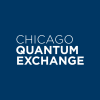
Chicago Quantum Exchange
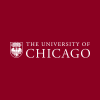
The University of Chicago
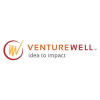
VentureWell
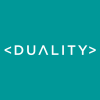
Duality Accelerator
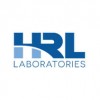
HRL Laboratories
Graduate students and postdoctoral fellows from any institution who wish to be considered for the Quantum Creators Prize Symposium should submit the following information by September 11, 2022:
- A C.V.
- A brief research statement (500 words) outlining research interests and achievements
- A brief personal statement (300 words) describing your vision for a future career in STEM research/education and how it has been shaped by your own perspectives and experiences working in the STEM research/education community
- Applicants should also request a recommendation letter from an advisor to be submitted through the link provided here
Applications for 2022 are closed
We expect everyone in our community to follow these guidelines when interacting with others both inside and outside of our community. Our goal is to keep ours a positive, inclusive, successful, and growing community.